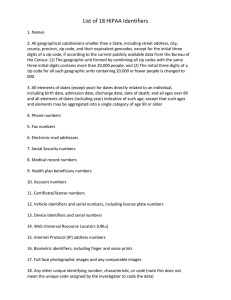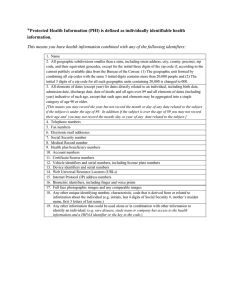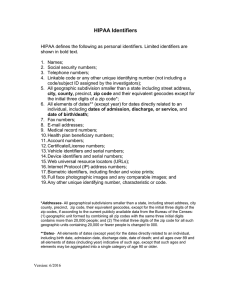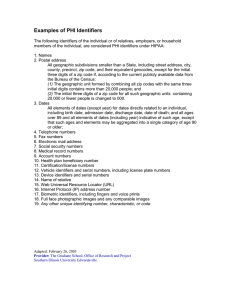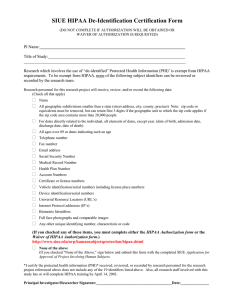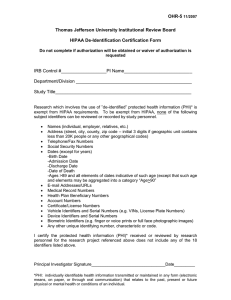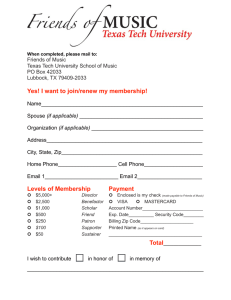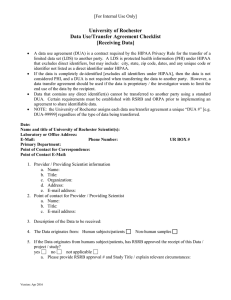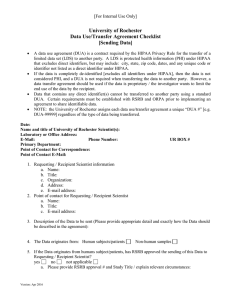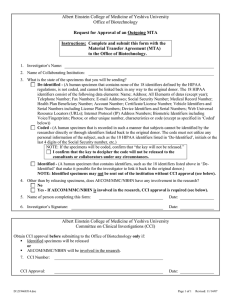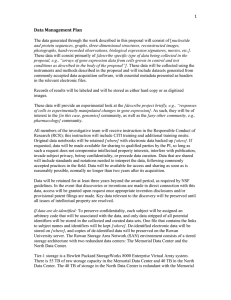FACT SHEET De-identified Health Information UNIVERSITY OF CALIFORNIA, SAN DIEGO
advertisement
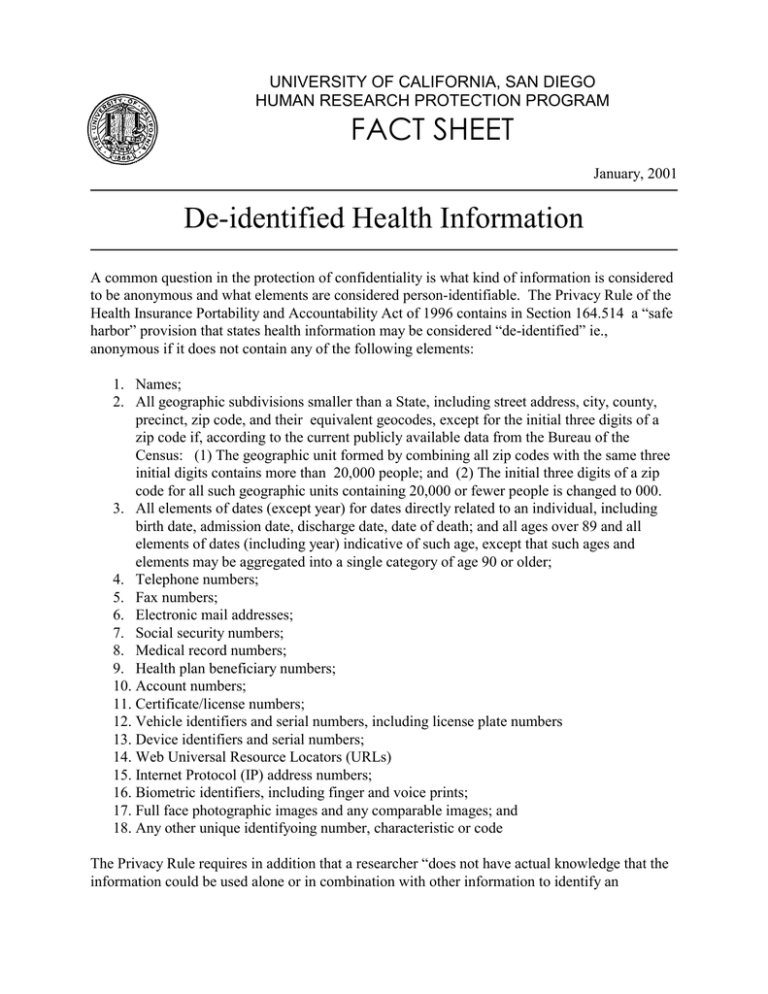
UNIVERSITY OF CALIFORNIA, SAN DIEGO HUMAN RESEARCH PROTECTION PROGRAM FACT SHEET January, 2001 De-identified Health Information A common question in the protection of confidentiality is what kind of information is considered to be anonymous and what elements are considered person-identifiable. The Privacy Rule of the Health Insurance Portability and Accountability Act of 1996 contains in Section 164.514 a “safe harbor” provision that states health information may be considered “de-identified” ie., anonymous if it does not contain any of the following elements: 1. Names; 2. All geographic subdivisions smaller than a State, including street address, city, county, precinct, zip code, and their equivalent geocodes, except for the initial three digits of a zip code if, according to the current publicly available data from the Bureau of the Census: (1) The geographic unit formed by combining all zip codes with the same three initial digits contains more than 20,000 people; and (2) The initial three digits of a zip code for all such geographic units containing 20,000 or fewer people is changed to 000. 3. All elements of dates (except year) for dates directly related to an individual, including birth date, admission date, discharge date, date of death; and all ages over 89 and all elements of dates (including year) indicative of such age, except that such ages and elements may be aggregated into a single category of age 90 or older; 4. Telephone numbers; 5. Fax numbers; 6. Electronic mail addresses; 7. Social security numbers; 8. Medical record numbers; 9. Health plan beneficiary numbers; 10. Account numbers; 11. Certificate/license numbers; 12. Vehicle identifiers and serial numbers, including license plate numbers 13. Device identifiers and serial numbers; 14. Web Universal Resource Locators (URLs) 15. Internet Protocol (IP) address numbers; 16. Biometric identifiers, including finger and voice prints; 17. Full face photographic images and any comparable images; and 18. Any other unique identifyoing number, characteristic or code The Privacy Rule requires in addition that a researcher “does not have actual knowledge that the information could be used alone or in combination with other information to identify an indvidual who is the subject of the information.” In other words, even if the 18 elements are removed, if a researcher knows there is a way using the remaining information to re-identify an individual uniquely, then the information is not considered de-identified. For additional information on information de-identification, consult Section 164.514 of the HIPAA rule text on the web at http://aspe.hhs.gov/admnsimp/bannerps.htm For an overview of the impact of HIPAA on biomedical research, see: http://www.hhs.gov/ocr/hipaa/research.html
